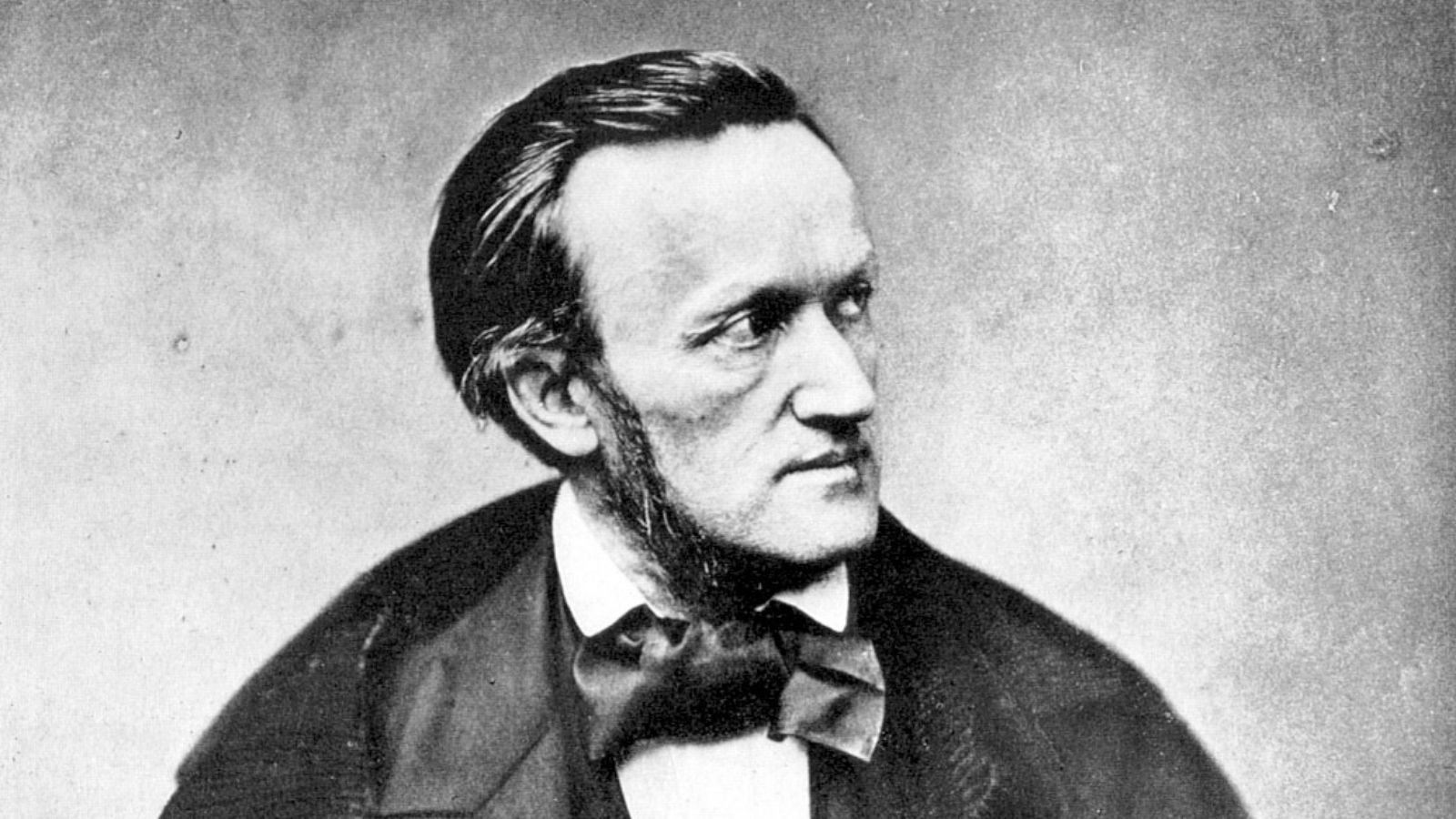

Jazz
Why Is John Coltrane Important To Jazz
Modified: January 29, 2024
Discover why John Coltrane is a pivotal figure in the world of jazz and how his innovative contributions continue to shape the genre.
(Many of the links in this article redirect to a specific reviewed product. Your purchase of these products through affiliate links helps to generate commission for AudioLover.com, at no extra cost. Learn more)
Table of Contents
- Introduction
- Early Life and Musical Development
- Joining the Miles Davis Quintet
- Formation of the John Coltrane Quartet
- Exploration of Modal Jazz
- The “Classic” Quartet and the Ascension of Coltrane
- The Impact of “A Love Supreme”
- Pushing Musical Boundaries with Free Jazz
- Legacy and Influence in the Jazz World
- Conclusion
Introduction
Jazz, a genre known for its improvisation and dynamic rhythms, has been shaped and influenced by numerous talented artists throughout its history. One such artist who has left an indelible mark on the world of jazz is John Coltrane. Born in 1926 in Hamlet, North Carolina, Coltrane emerged as a trailblazing saxophonist and composer, pushing the boundaries of the genre and revolutionizing the way people experience jazz.
Coltrane’s musical journey began at a young age when he first picked up the alto saxophone. Inspired by the likes of Charlie Parker and Johnny Hodges, he quickly developed a knack for playing intricate melodies and captivating his audience with his unique sound. As he honed his skills, Coltrane’s passion for jazz grew, leading to his eventual collaborations with some of the most influential jazz musicians of the era.
Over the course of his career, Coltrane made significant contributions to the evolution of jazz. From his time with the Miles Davis Quintet to the formation of his own groundbreaking quartet, Coltrane continuously pushed the boundaries of the genre, exploring new musical territories and experimenting with various techniques.
One of the remarkable aspects of Coltrane’s artistry was his ability to seamlessly blend different styles and genres, incorporating elements of blues, bebop, and classical music into his compositions. This versatility and willingness to explore uncharted musical territories set him apart from his contemporaries and established him as one of the most innovative musicians of his time.
Coltrane’s most notable contribution to jazz is perhaps his exploration of modal jazz. This approach, characterized by a focus on scales and modes rather than traditional chord progressions, allowed for a greater sense of freedom and a heightened level of improvisation. Coltrane’s album “Giant Steps,” released in 1960, is a prime example of his mastery of modal jazz and his ability to push the boundaries of the genre.
As Coltrane’s career progressed, he formed what is now known as the “Classic” John Coltrane Quartet, consisting of himself on saxophone, McCoy Tyner on piano, Jimmy Garrison on bass, and Elvin Jones on drums. This quartet would go on to create some of the most iconic and influential jazz recordings of all time, including the seminal album “A Love Supreme.”
The impact of “A Love Supreme” cannot be overstated. Released in 1965, the album is a spiritual and musical journey, showcasing Coltrane’s quest for spiritual enlightenment and his deep connection to the divine. The album’s four movements, each representing a different aspect of Coltrane’s spiritual journey, captivated listeners and solidified Coltrane’s status as a legendary figure in the jazz world.
Coltrane’s quest for innovation and musical exploration did not stop with “A Love Supreme.” In the later years of his career, he delved further into experimental territory, venturing into the realm of free jazz. Free jazz, characterized by its abandonment of traditional song structures and improvisation on a collective level, allowed Coltrane and his fellow musicians to push the boundaries of musical expression and create truly groundbreaking and avant-garde experiences.
John Coltrane’s legacy in the jazz world is immeasurable. His musical contributions continue to resonate with listeners and inspire future generations of jazz musicians. His commitment to pushing the boundaries of the genre and his unwavering dedication to his artistry have solidified his place in the pantheon of jazz greats. Whether it be his captivating improvisations, his exploration of modal jazz, or his timeless compositions, John Coltrane’s impact on jazz is profound and everlasting.
Early Life and Musical Development
John William Coltrane was born on September 23, 1926, in Hamlet, North Carolina. His love for music was evident from a young age, and he began playing the clarinet in his high school band. Coltrane’s musical journey truly took off when he switched to the alto saxophone, inspired by the virtuosity of Charlie Parker and the smooth tones of Johnny Hodges.
Coltrane’s early influences shaped his musical style, and he diligently practiced and honed his skills on the saxophone. However, his true breakthrough came when he enlisted in the U.S. Navy in 1945. During his service, he performed in the Navy jazz band, where he expanded his musical horizons and developed his improvisational abilities.
After his discharge from the Navy in 1946, Coltrane began his professional career in the thriving jazz scene of Philadelphia. He played in various groups and became a part of the rhythm and blues scene, collaborating with musicians such as Dizzy Gillespie and Johnny Hodges. These experiences provided valuable opportunities for Coltrane to learn from seasoned musicians and refine his musical voice.
In the early 1950s, Coltrane’s talent caught the attention of legendary trumpeter Miles Davis. He joined Davis’ quintet in 1955, marking a significant turning point in his career. This period with Davis allowed Coltrane to fully immerse himself in the world of bebop and explore his improvisational prowess alongside talented musicians like Red Garland, Paul Chambers, and Philly Joe Jones.
Working with Davis exposed Coltrane to a new level of musical sophistication and complexity. Davis challenged him to experiment with different techniques and encouraged his growth as a musician. Coltrane’s time with Davis was not without its struggles, as his addiction to drugs began to take a toll on his personal and professional life. However, he managed to overcome his addiction and emerged stronger and more determined to push the boundaries of his musicality.
Coltrane’s dedication to his craft was unparalleled. He practiced incessantly, studying the works of various saxophonists and exploring different musical styles. This dedication paid off, as he rapidly developed a unique and instantly recognizable sound on the saxophone. His technical proficiency, coupled with his emotional depth and expressive playing, captivated audiences and garnered him a loyal following.
As his musical journey progressed, Coltrane’s personal and spiritual growth began to influence his artistry. He delved into religion and philosophy, seeking meaning and purpose beyond his musical pursuits. This spiritual quest would later inform some of his most profound and influential compositions.
Overall, Coltrane’s early life and musical development laid the foundation for his future contributions to jazz. The experiences gained from his time in the Navy, his collaborations with renowned musicians, and his unwavering dedication to his craft shaped him into the innovative and influential musician he would become. His early struggles and personal growth served as catalysts for his artistic evolution, propelling him forward on a path marked by groundbreaking musical exploration and self-discovery.
Joining the Miles Davis Quintet
In 1955, John Coltrane received a life-changing invitation to join the Miles Davis Quintet. This marked a significant milestone in his career and provided the platform for him to further develop his musical voice and forge his own path in the world of jazz.
Joining forces with Miles Davis proved to be a transformative experience for Coltrane. Davis, a revered trumpeter and bandleader, was known for his innovative approach to jazz and his ability to assemble powerhouse ensembles. The Quintet, which also included Red Garland on piano, Paul Chambers on bass, and Philly Joe Jones on drums, became a creative powerhouse, pushing the boundaries of jazz and capturing the attention of audiences worldwide.
Coltrane’s time with the Quintet allowed him to fully immerse himself in the language of bebop and further refine his improvisational skills. Playing alongside Davis, a master of musical nuance and expression, challenged Coltrane to explore new techniques and push beyond his comfort zone.
One of the defining features of Coltrane’s time with the Miles Davis Quintet was his developing relationship with Davis himself. Davis recognized Coltrane’s immense talent and nurtured his growth as a musician. He encouraged Coltrane to experiment with different scales and modes, seeking new possibilities in music. This encouragement sparked Coltrane’s exploration of modal jazz, which would later become a defining characteristic of his own musical style.
While Coltrane’s tenure with the Quintet was relatively brief, spanning from 1955 to 1957, it left an indelible mark on his musical development. The collaborations with Davis and the other members of the Quintet fueled Coltrane’s creativity, inspiring him to push the boundaries of his playing and develop his artistic voice.
Through performances and recordings during this period, Coltrane showcased his technical virtuosity and ability to captivate audiences with his intense and intricate solos. His playing became more fluid and expressive, and he began to incorporate elements of his own personal style into the music.
It is important to note that Coltrane’s time with the Quintet was not without its challenges. He struggled with drug addiction, which led to his temporary dismissal from the group. However, after seeking help and overcoming his addiction, he rejoined the Quintet in 1957 for a short period before venturing into his own musical endeavors.
The experience of working with Miles Davis and being a part of the Quintet was pivotal in Coltrane’s artistic development. It provided him with the opportunity to learn from some of the best musicians of the time and served as a platform for him to explore his own ideas and push the boundaries of jazz.
Coltrane’s time with the Miles Davis Quintet laid the groundwork for his future musical explorations and set the stage for his emergence as one of the most innovative and influential musicians in the history of jazz.
Formation of the John Coltrane Quartet
After his tenure with the Miles Davis Quintet, John Coltrane was ready to embark on his own artistic journey. In 1960, he formed what would become one of the most iconic and influential groups in jazz history—the John Coltrane Quartet.
With the formation of this quartet, Coltrane brought together a group of supremely talented musicians who shared his vision for pushing the boundaries of jazz. The original lineup consisted of McCoy Tyner on piano, Jimmy Garrison on bass, and Elvin Jones on drums.
Each member of the quartet brought a unique perspective and musicality, creating a dynamic and symbiotic relationship within the group. Tyner’s innovative and percussive approach to piano playing provided a solid foundation for Coltrane’s saxophone improvisations. Garrison’s melodic and fluid bass lines added depth and richness to the compositions, while Jones’ powerful and inventive drumming propelled the music to new heights.
The quartet’s collaborative and exploratory nature allowed for a level of musical freedom and experimentation rarely seen in jazz at the time. Coltrane encouraged his bandmates to push their boundaries and explore new sonic territories during their performances and recording sessions. The result was a fresh and innovative sound that captivated audiences and revolutionized the jazz landscape.
One of the distinctive features of the John Coltrane Quartet’s music was the extended and intense improvisations. Coltrane’s relentless pursuit of musical expression and his fervent dedication to his craft led to prolonged solos characterized by complex harmonies, lightning-fast runs, and intense emotional depth.
The quartet’s performances were often marked by their energy and intensity, drawing audiences into a mesmerizing sonic journey. Coltrane’s compositions and arrangements seamlessly blended elements of traditional jazz with modal and avant-garde influences, creating a unique and captivating sound.
One of the quartet’s most renowned albums is “My Favorite Things,” released in 1961. The title track, a reinterpretation of the classic Rodgers and Hammerstein song, showcased the quartet’s ability to reimagine familiar tunes and inject them with their own distinct flavor. The album’s success not only elevated Coltrane’s career but also solidified the quartet’s status as a force to be reckoned with in the jazz world.
As the quartet continued to evolve, their music became increasingly spiritual and transcendental. Coltrane’s personal and spiritual explorations heavily influenced his compositions, shaping them into powerful expressions of devotion and transcendence.
The John Coltrane Quartet’s music was not only admired by jazz enthusiasts but also influenced a wide range of musicians and genres. Their innovative approach, commitment to musical exploration, and unwavering dedication to artistic integrity left an indelible mark on the jazz world and beyond.
Although the quartet disbanded after Coltrane’s untimely death in 1967, their musical legacy lives on. The recordings and performances of the John Coltrane Quartet continue to inspire and captivate listeners today, reminding us of the boundless possibilities within the world of jazz and the enduring impact of a group of brilliant and visionary musicians.
Exploration of Modal Jazz
John Coltrane’s exploration of modal jazz was a groundbreaking and pivotal period in his career. Departing from the traditional chord progressions of bebop, Coltrane delved into a new musical approach that emphasized scales and modes, allowing for greater freedom of expression and a fresh sonic landscape.
Coltrane’s interest in modal jazz was influenced by his studies of music theory and his encounters with artists such as George Russell, who advocated for a modal approach to improvisation. This shift in his musical thinking opened up a world of possibilities and laid the foundation for his innovative compositions.
A prime example of Coltrane’s mastery of modal jazz can be found in his 1960 album, “Giant Steps”. The title track showcases his ability to navigate complex chord progressions using a series of key centers and modal interchange. This pioneering approach not only challenged the conventions of jazz composition but also showcased Coltrane’s virtuosity and harmonic ingenuity.
Coltrane’s interest in modal jazz allowed him to explore new tonalities, experiment with different scales, and stretch the boundaries of traditional improvisation. He embraced the use of pentatonic and whole-tone scales, employing them in intricate and mesmerizing ways.
One of the most notable aspects of Coltrane’s modal jazz explorations was his ability to create hypnotic and mesmerizing vamps. These repetitive and cyclical musical patterns served as a foundation for extended improvisation and allowed for a deeper exploration of melodic and rhythmic possibilities.
Coltrane’s modal jazz experiments were not confined to his own compositions. He reinterpreted standards and traditional tunes, using modal techniques to breathe new life into familiar melodies. This innovative reimagining of familiar material showcased his ability to fuse the old with the new, pushing the boundaries of jazz convention.
Coltrane’s exploration of modal jazz had a profound impact on the genre as a whole. His innovative approach influenced countless musicians and composers, shaping the direction of jazz in the years to come. His emphasis on scales, modes, and tonal centers revolutionized the way musicians approached improvisation and composition.
Furthermore, Coltrane’s modal jazz period served as a bridge between traditional jazz and the avant-garde movement. His willingness to experiment and break free from conventional structures laid the groundwork for the emergence of free jazz, a genre characterized by its abandonment of traditional harmony and meter.
Coltrane’s modal jazz period was a transformative phase in his career and contributed to his status as an influential and visionary artist. His bold exploration of new musical possibilities left an indelible mark on the jazz world, forever changing the way musicians approach improvisation, composition, and the overall creative process.
The “Classic” Quartet and the Ascension of Coltrane
The formation of the “Classic” John Coltrane Quartet, consisting of John Coltrane on saxophone, McCoy Tyner on piano, Jimmy Garrison on bass, and Elvin Jones on drums, marked a pivotal moment in Coltrane’s career. This quartet would go on to create groundbreaking and influential jazz recordings, solidifying Coltrane’s status as one of the most revered musicians in the history of the genre.
The chemistry between the members of the “Classic” Quartet was undeniable. Each musician brought their unique talents and musical sensibilities, resulting in a collective synergy that propelled their performances to new heights. McCoy Tyner’s innovative piano voicings and rhythmic approach provided a harmonically rich foundation for Coltrane’s melodic explorations. Jimmy Garrison’s thoughtful and melodic bass lines added depth and texture, while Elvin Jones’s explosive and polyrhythmic drumming drove the music forward with incredible energy.
Coltrane’s collaboration with this quartet allowed him to fully embrace his musical vision and delve into the depths of his creative expression. The quartet’s performances were marked by their intensity, innovation, and fearlessness in pushing the boundaries of improvisation.
During this period, Coltrane’s compositions became increasingly complex, incorporating intricate harmonic progressions and unconventional structures. Pieces like “Naima,” “Giant Steps,” and “Impressions” showcased Coltrane’s ability to craft emotive and intellectually stimulating compositions that challenged both the musicians and the listeners.
One of the quartet’s most notable albums is the 1964 release, “A Love Supreme.” This album, considered a landmark in jazz history, showcases Coltrane at the height of his creative powers. Divided into four movements, “Acknowledgment,” “Resolution,” “Pursuance,” and “Psalm,” “A Love Supreme” is a deeply spiritual and transcendent work that solidified Coltrane’s place as a visionary artist.
With “A Love Supreme,” Coltrane sought to channel and express his deep spirituality through his music. The album’s honesty, vulnerability, and profound musicality resonated with audiences and critics alike, cementing its legacy as one of the greatest jazz albums of all time.
Another significant aspect of the quartet’s music was the concept of “sheets of sound,” a term often associated with Coltrane’s playing style. Coltrane’s ability to flawlessly execute rapid and intricate lines, weaving them together in a captivating manner, added a unique and distinctive dimension to the quartet’s sound.
The “Classic” Quartet’s tenure was relatively short-lived, actively performing and recording from 1961 to 1965. However, their impact on the jazz landscape was profound. Their fearless exploration of harmony, rhythm, and improvisation opened up new avenues for musicians, influencing countless artists across genres and generations.
Tragically, Coltrane’s life was cut short when he passed away in 1967 at the age of 40. Nevertheless, his musical legacy and the contributions made with the “Classic” Quartet continue to inspire musicians and jazz enthusiasts to this day.
The ascension of John Coltrane with the “Classic” Quartet represents a pinnacle in his career, where his musical vision merged with the collective artistry of his bandmates, resulting in some of the most innovative, profound, and influential jazz recordings of all time.
The Impact of “A Love Supreme”
Released in 1965, “A Love Supreme” stands as one of the most impactful and influential albums in the history of jazz. Composed and performed by John Coltrane and his “Classic” Quartet, this masterwork transcends the boundaries of music, touching the hearts and souls of listeners around the world.
“A Love Supreme” is more than just an album—it is a spiritual and musical journey. Divided into four movements, the album serves as Coltrane’s personal expression of gratitude, devotion, and his search for spiritual enlightenment. It is a testament to his unwavering faith and his deep connection to the divine.
The impact of “A Love Supreme” cannot be overstated. Upon its release, the album received critical acclaim and quickly garnered a dedicated following. It was praised for its powerful and emotive compositions, the virtuosity of the musicians, and the innovative approach to improvisation and composition.
What set “A Love Supreme” apart from other jazz recordings of its time was its introspective and introspective nature. Coltrane’s commitment to expressing his innermost emotions and spirituality resonated deeply with listeners, transcending musical boundaries and touching a universal chord.
Through the album’s four movements—”Acknowledgment,” “Resolution,” “Pursuance,” and “Psalm”—Coltrane takes listeners on an emotional and sonic journey. From the vibrant and joyful energy of “Acknowledgment” to the contemplative and serene tones of “Psalm,” each movement leaves an indelible impact, evoking a range of emotions and spiritual contemplation.
The album’s legacy extends far beyond the jazz genre. The themes of love, spirituality, and human connection explored in “A Love Supreme” resonated with audiences of all backgrounds and musical preferences. The raw emotion and sincerity of Coltrane’s compositions challenged the notions of what jazz could be and paved the way for greater artistic freedom and expression.
“A Love Supreme” also contributed to the development of spiritual jazz as a subgenre. Its fusion of jazz improvisation and deeply personal spiritual themes inspired musicians across genres to explore and incorporate spiritual elements into their own music.
Decades after its release, “A Love Supreme” continues to captivate new generations of listeners. Its influence can be heard in the works of artists as diverse as Kamasi Washington, Pharoah Sanders, and Carlos Santana, among many others. The album’s profound impact on the jazz world solidifies its place as a timeless masterpiece that transcends the boundaries of genre and time.
Tragically, Coltrane’s life was cut short not long after the release of “A Love Supreme.” However, the impact of this album, combined with his other groundbreaking recordings, secures his legacy as one of the most innovative and influential musicians in the history of jazz.
“A Love Supreme” stands as a testament to the power of music, the limitless possibilities of artistic expression, and the profound impact that one individual can have on the cultural landscape. As listeners immerse themselves in the spiritual journey of “A Love Supreme,” they are reminded of the enduring brilliance and transformative power of John Coltrane’s music.
Pushing Musical Boundaries with Free Jazz
In the later years of his career, John Coltrane ventured into the realm of free jazz, a genre characterized by its abandonment of traditional song structures and a focus on collective improvisation. With this musical exploration, Coltrane pushed the boundaries of jazz further than ever before, embracing a new level of artistic freedom and experimentation.
Free jazz allowed Coltrane and his fellow musicians to break free from the constraints of predetermined chord progressions and harmonies. In this style, the music flowed organically, with the musicians spontaneously responding to each other’s playing and creating in the moment.
Coltrane’s immersion in free jazz can be heard on albums such as “Ascension” (1965) and “Interstellar Space” (released posthumously in 1974). These recordings exemplify the avant-garde and boundary-pushing nature of the genre, with extended, intense, and often chaotic improvisations.
One of the key elements of free jazz is the concept of collective improvisation, where all the musicians contribute equally to the creation of the music. This democratic approach allows for a greater sense of collaboration and creative exploration. Coltrane’s quartet, along with other notable free jazz artists of the time, sought to create a tapestry of sound that was free-flowing and liberated from traditional constraints.
With free jazz, Coltrane and his contemporaries blurred the lines between composition and improvisation, opening up new possibilities for spontaneous musical expression. The music became more abstract, incorporating unconventional techniques such as extended techniques on instruments, non-traditional use of rhythm, and a disregard for conventional tonality.
Coltrane’s foray into free jazz was met with both admiration and criticism. Some hailed him as a visionary, applauding his fearlessness and the innovative nature of his music. Others found the music challenging to comprehend and considered it too far removed from the traditional jazz idiom.
However, it is important to note that Coltrane’s exploration of free jazz was not a complete departure from his previous work. Rather, it was a natural progression and an extension of his ongoing musical journey. His dedication to pushing the boundaries of his artistry compelled him to explore new avenues and challenge himself creatively.
While the free jazz movement may not have achieved the same commercial success as other jazz styles, its impact on the genre cannot be overlooked. It inspired subsequent generations of musicians, encouraging them to think outside the box and question the traditional conventions of music-making.
Today, the influence of free jazz can be heard in various genres, from experimental jazz to avant-garde rock. Its legacy is a testament to the power of pushing musical boundaries and embracing artistic freedom.
John Coltrane’s exploration of free jazz showcased his relentless pursuit of musical expression and his unwavering commitment to innovation. Through this genre, he challenged the status quo, opening doors for future musicians to explore uncharted territories and redefine the boundaries of jazz.
Legacy and Influence in the Jazz World
John Coltrane’s impact on the jazz world is immeasurable, and his legacy continues to shape and inspire generations of musicians. His innovative and boundary-pushing approach to music, coupled with his virtuosity and emotional depth, solidified his status as one of the most influential figures in jazz history.
Coltrane’s exploration of new musical territories, from his modal jazz experiments to his forays into free jazz, expanded the possibilities of the genre and pushed the boundaries of what was considered “acceptable” in jazz at the time. His technical prowess on the saxophone was matched by his ability to emote and connect with listeners on a profound level.
One aspect of Coltrane’s legacy is his influence as a saxophonist. His unique tone, fiery improvisations, and complex harmonic language continue to inspire saxophonists across generations. His groundbreaking use of extended techniques and his dedication to honing his craft set a new standard for saxophone playing.
Furthermore, Coltrane’s commitment to spirituality and his search for meaning beyond the confines of music left a lasting impact on the jazz world. His compositions often delved into deep emotional and spiritual themes, connecting with audiences on a profound level. His ability to merge the emotional and the intellectual aspects of music created a new dimension within the jazz genre.
Coltrane’s influence can be heard in a myriad of jazz subgenres and styles that followed his era. From the spiritual jazz movement of the 1970s to the avant-garde explorations of the 1960s and beyond, Coltrane’s spirit and musical vision have left an indelible mark.
His influence can be seen in the works of artists such as Pharoah Sanders, Kamasi Washington, and Branford Marsalis, who have embraced his spirit of musical exploration and innovation. Coltrane’s musical approach and artistic fearlessness have become guiding principles for those who seek to push boundaries and challenge the limitations of jazz.
Coltrane’s compositions and recordings continue to be studied and analyzed by musicians and scholars around the world. His albums, such as “Giant Steps,” “A Love Supreme,” and “My Favorite Things,” are regarded as masterpieces and essential listening for any jazz enthusiast.
Moreover, Coltrane’s influence extends beyond the jazz genre. His impact can be felt in the realms of rock, fusion, and even classical music. Artists from multiple genres have drawn inspiration from his groundbreaking techniques, modal explorations, and relentless pursuit of musical expression.
In recognition of his groundbreaking contributions to music, Coltrane has been posthumously honored with numerous awards and accolades. He has been inducted into the DownBeat Jazz Hall of Fame and the Grammy Hall of Fame, and his influence continues to be celebrated in jazz festivals, exhibitions, and tributes around the world.
John Coltrane stands as a towering figure in the history of jazz, leaving an indelible mark on the genre and inspiring countless musicians. His legacy is one of innovation, fearlessness, and a relentless pursuit of musical truth. As long as jazz is played, his spirit will be kept alive, ensuring that his impact on the art form will endure for generations to come.
Conclusion
John Coltrane, with his innovative spirit, virtuosity, and boundless creativity, remains one of the most iconic and influential figures in the history of jazz. His contributions to the genre have left an indelible mark, shaping the way we perceive and experience jazz today.
From his early days as a sideman with the likes of Miles Davis, to the formation of the “Classic” Quartet and his exploration of modal and free jazz, Coltrane consistently pushed the boundaries of what was considered possible within the realm of jazz music. His relentless pursuit of artistic freedom, coupled with his technical brilliance and profound emotional depth, set him apart as a musical pioneer.
Throughout his career, Coltrane’s innovation inspired countless musicians and composers to think beyond the conventional norms of jazz, and his influence transcended the boundaries of the genre. His impact can be heard in the work of contemporary jazz artists, as well as in other musical disciplines, including rock, fusion, and classical music.
Coltrane’s albums, such as “A Love Supreme,” “Giant Steps,” and “My Favorite Things,” continue to captivate listeners, inviting them into a world of creative expression and profound musical exploration. His devotion to spirituality and his unwavering commitment to his artistry added a layer of depth and emotional resonance to his music that continues to resonate with listeners of all backgrounds.
Moreover, Coltrane’s legacy reaches far beyond his recorded works. His influence as a saxophonist, composer, and bandleader expanded the possibilities of jazz, elevating it to new artistic heights. His unwavering dedication to pushing musical boundaries and his willingness to take risks paved the way for future generations of musicians to carve their own paths and explore new horizons.
As we reflect on the lasting impact of John Coltrane, it becomes clear that his contributions to jazz extend far beyond his lifetime. His music continues to inspire, challenge, and captivate audiences around the world, transcending boundaries of time and genre. Coltrane’s commitment to artistic integrity, his relentless pursuit of musical excellence, and his unwavering passion for self-expression have cemented his place as a true legend in the pantheon of jazz greats.
Today, we celebrate John Coltrane not only for his technical mastery and musical genius, but also for his profound contribution to the evolution of jazz as an art form. His willingness to embrace musical freedom and his unwavering commitment to pushing the boundaries of his craft serve as an enduring inspiration to musicians and lovers of jazz everywhere.
John Coltrane’s influence will continue to shape the future of jazz, inspiring generations of musicians to explore new musical horizons, challenge convention, and soar to new artistic heights. His legacy is a testament to the power of creativity, innovation, and the boundless possibilities of music.











